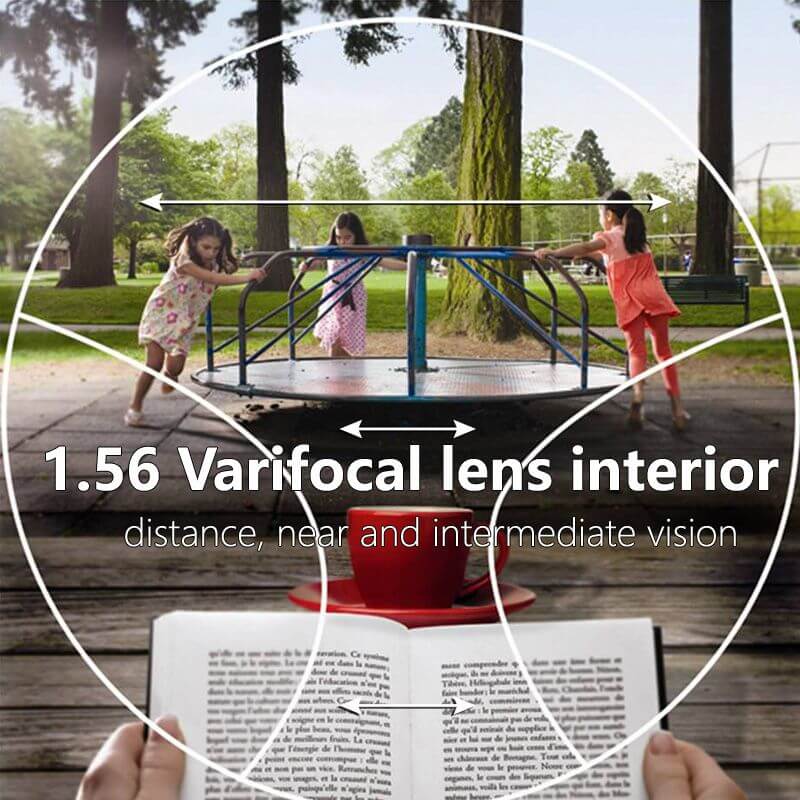A Guide To Varifocals

With the perfect pair of varifocals, you'll never have to switch up or bring your additional glasses along ever again! You should never have to juggle your glasses just because your eyes can't adjust to distance entirely… consider opting for glasses that do all the hard work for you! Here’s everything you should know about varifocals…
What are Varifocals?
Varifocals, also referred to as progressive lenses, are a type of glasses lens designed to correct multiple vision problems in a single pair of glasses. Unlike traditional bifocal lenses that have a clear distinction between the two prescription in the upper and lower segments, varifocals offer a seamless transition between different prescription strengths. This means you can see clearly at varying distances – whether you're reading, using a computer, or looking into the distance – all without needing to change glasses.
How Do Varifocals Work?
Varifocal lenses are engineered using advanced optics to incorporate a gradual change in prescription strength from the top of the lens to the bottom. The upper part of the lens corrects distance vision, while the lower portion helps with near vision. The middle section of the lens ensures a smooth transition between these two prescription strengths, eliminating the abrupt lines found in traditional bifocals.
The magic lies in the design of the lens surface. A skilled optician takes your prescription and combines it with the desired reading power to create a lens that caters to all your visual needs. This technology allows you to effortlessly shift your gaze to find the optimal focus for any task, whether it's driving, reading a book, or using a smartphone.
Benefits of Varifocals
- Convenience: Varifocals eliminate the need to carry multiple pairs of glasses for different activities. They seamlessly accommodate various vision needs in a single pair, making your daily tasks much more convenient.
- Smooth Transition: Unlike bifocals or trifocals, varifocals offer a smooth transition between prescription strengths. This gradual shift reduces the awkward head tilting required to find the right focus.
- Cosmetic Appeal: Varifocals don't have visible lines on the lenses, which is a significant cosmetic advantage over traditional bifocals. This means your glasses look just like regular glasses, enhancing your overall appearance. They can even make you appear younger as there is no need for reading glasses.
- Versatility: Whether you're working on a computer, reading, cooking, or simply enjoying the scenery, varifocals provide clear vision across all distances, giving you the freedom to tackle any task without visual discomfort.
Disadvantages of Varifocals
- Adaptation: While it might take a little time to adjust to varifocals, most people find the adaptation period relatively short. Your brain quickly learns to instinctively adjust your gaze to the right part of the lens for the task at hand.
- Not recommended for people who suffer from dizziness or balance issues such as vertigo, as they can increase these sensations
Choosing the Right Varifocals
It's important to consult with an experienced optometrist who will take precise measurements, and customise the lenses to your individual prescription and visual requirements. Varifocal lenses can be personalised to your lifestyle, ensuring that they provide optimal vision whether you spend a lot of time on the computer, engage in outdoor activities or perform a lot of work that is close too.
Caring for Varifocals
It's essential to properly care for your varifocal lenses. You should avoid exposing varifocal lenses to extreme temperatures, as this can affect the lens coatings and overall performance, it is also advised to clean your lenses regularly using a microfiber cloth to avoid smudges and scratches and store your glasses in a protective case when you're not wearing them to prevent accidental damage.
If you find yourself squinting more to see things up close, holding a menu etc further away so that you can see clearly, or switching your regular glasses for reading glasses, it maybe time to speak to your optometrist about varifocal lenses, why bother with two pairs of glasses when you can read and drive with the same pair.
Author: John Dreyer Optometrist Bsc(Hons), MCOPTOM, DipCLP
Created: 20 Sep 2023, Last modified: 7 Jan 2025

